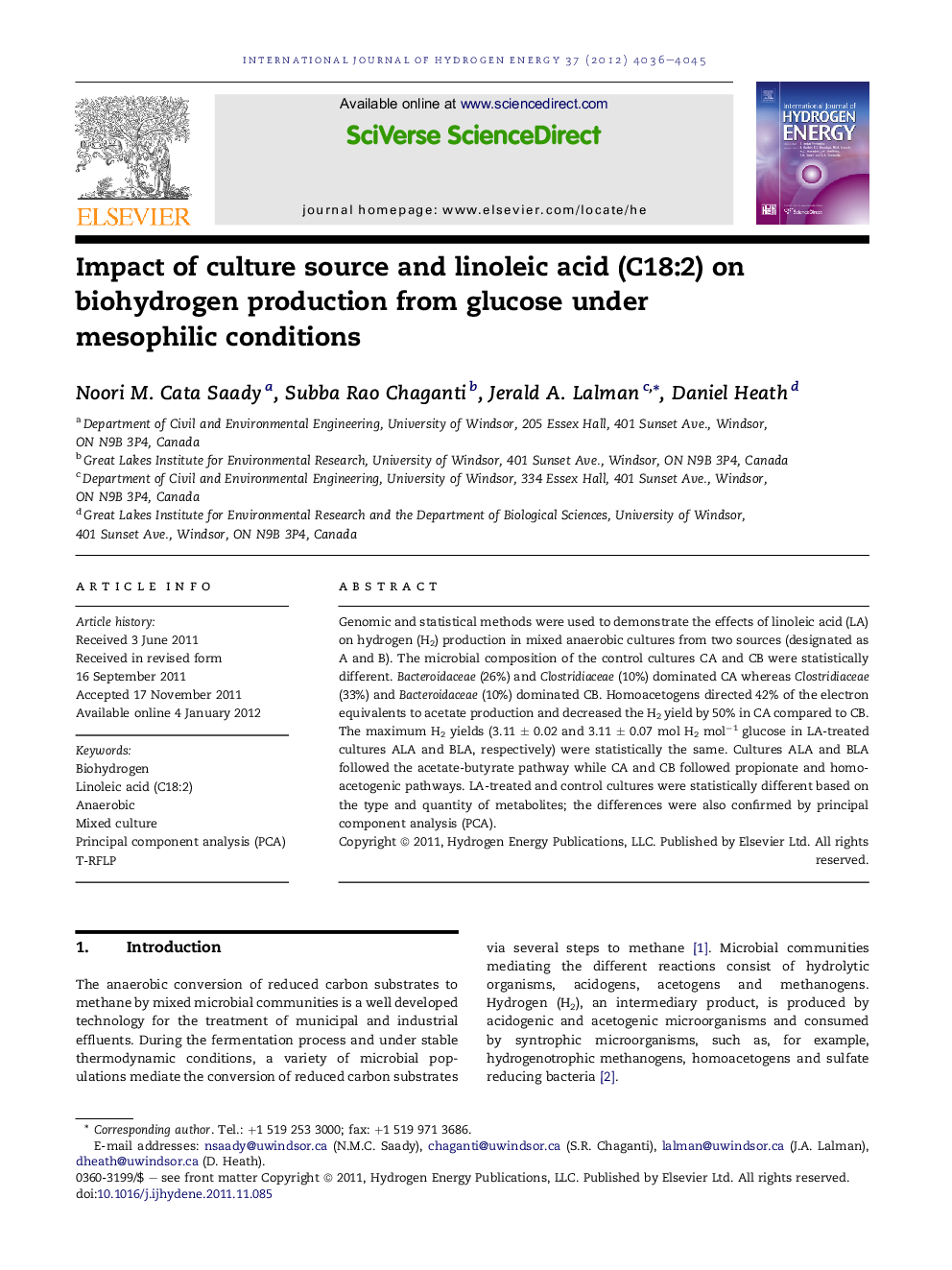| Article ID | Journal | Published Year | Pages | File Type |
|---|---|---|---|---|
| 1275457 | International Journal of Hydrogen Energy | 2012 | 10 Pages |
Genomic and statistical methods were used to demonstrate the effects of linoleic acid (LA) on hydrogen (H2) production in mixed anaerobic cultures from two sources (designated as A and B). The microbial composition of the control cultures CA and CB were statistically different. Bacteroidaceae (26%) and Clostridiaceae (10%) dominated CA whereas Clostridiaceae (33%) and Bacteroidaceae (10%) dominated CB. Homoacetogens directed 42% of the electron equivalents to acetate production and decreased the H2 yield by 50% in CA compared to CB. The maximum H2 yields (3.11 ± 0.02 and 3.11 ± 0.07 mol H2 mol−1 glucose in LA-treated cultures ALA and BLA, respectively) were statistically the same. Cultures ALA and BLA followed the acetate-butyrate pathway while CA and CB followed propionate and homoacetogenic pathways. LA-treated and control cultures were statistically different based on the type and quantity of metabolites; the differences were also confirmed by principal component analysis (PCA).
Graphical abstractFigure optionsDownload full-size imageDownload as PowerPoint slideHighlights► Impact of linoleic acid on hydrogen yield using different anaerobic cultures. ► Same maximum H2 yield for the two microbial cultures fed the same LA concentration. ► Propionate production was dominant in controls. ► Butyrate pathway was central in cultures fed LA. ► Cultures fed LA statistically different than controls based on genomic and statistical tools.
